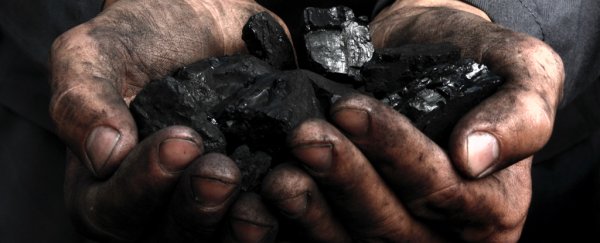A rediscovered journal from the 1960s reveals the coal industry has understood the dangers of human-caused climate change for over 50 years, and may constitute the earliest known evidence of such fateful insider knowledge.
It's become clear in recent years how oil giant Exxon was aware of the causes and consequences of climate change from at least the 1970s, but chose to deliberately mislead the public for decades. The newly resurfaced evidence now shows coal executives equally understood the science of catastrophic global warming as far back as 1966.
In a research article in the August 1966 issue of trade publication Mining Congress Journal, James Garvey, the then-president of Bituminous Coal Research Inc., which developed pollution control equipment, discussed the state of pollutants and their regulation in the coal industry at the time.
While much of the paper is concerned with sulphur in coal, a small section early in the article is concerned with carbon dioxide (CO2) discharge, and lays bare just how acutely appreciated the "the far-reaching aspects of the air pollution problem" actually were as far back as the 1960s.
"There is evidence that the amount of carbon dioxide in the Earth's atmosphere is increasing rapidly as a result of the combustion of fossil fuels," Garvey writes.
"If the future rate of increase continues as it is at the present, it has been predicted that, because the CO2 envelope reduces radiation, the temperature of the Earth's atmosphere will increase and that vast changes in the climates of the Earth will result."
Garvey ends the paragraph, noting: "Such changes in temperature will cause melting of the polar icecaps, which, in turn would result in the inundation of many coastal cities including New York and London".
The existence of the article was discovered in August by engineer Chris Cherry from the University of Tennessee, Knoxville, who found it in a stack of vintage journals about to be discarded.
As he told Élan Young at HuffPost, Cherry was floored by Garvey's observations, and what they implied about the scope of historic scientific awareness of climate change even in the 1960s – years before denialism of human-caused climate change became entrenched.
"It pretty well described a version of what we know today as climate change," Cherry told HuffPost.
"Increases in average air temperatures, melting of polar ice caps, rising of sea levels. It's all in there."
It's worth noting that Garvey's article isn't the sole voice acknowledging the dangers of coal-produced pollution in the August 1966 issue.
In a discussion piece following Garvey's paper, combustion engineer James Jones from Peabody Coal (now called Peabody Energy, the largest private coal company in the world), does not address the global warming issue, but admits that air pollution standards to protect health have a place, saying the "Situation is Urgent".
"We are in favour of cleaning up our air," Jones writes. "We are, in effect, 'buying time'. But we must use that time productively to find answers to the many unsolved problems."
In the years and decades to come, Peabody would become a huge industrial player in organised climate change denial – buying perhaps much more time than Jones had ever envisaged.
Of course, while the rediscovery of the 1966 journal is important – given it reveals the coal industry understood the climate change implications of burning fossil fuels, even so long ago – the truth is, by that point, those dangers were no secret.
The year before, in 1965, a US science advisory committee advised president Lyndon Johnson of the global warming processes underway due to fossil fuels being burned.
"Man is unwittingly conducting a vast geophysical experiment. Within a few generations he is burning the fossil fuels that slowly accumulated in the earth over the past 500 million years," the report said.
"The climatic changes that may be produced by the increased CO2 content could be deleterious from the point of view of human beings."
Even then this was old news. The dangers of climate change literally made the front pages of newspapers as far back as 1912 – more than 100 years ago – and was written about even in the popular press as far back as the mid-19th century.
While our scientific understanding of many of the processes involved in climate change has no doubt evolved hugely over the last 150 years or so, it's clearly been known for an incredibly long time that burning coal produces CO2 that traps heat in the atmosphere and warms the planet. Case closed.
Given the unfortunate, public realities of pollution from burning coal, in the conclusion of his discussion piece, the Peabody engineer Jones wondered: "What can an individual with a personal stake in the future of the coal industry do?"
Among the answers, he offered this.
"Be a 'one-man' public relations emissary for the coal industry," Jones explained to his industry colleagues.
"Tell your neighbours, friends, and the general public how important coal is to their every-day existence. Also tell them about the all-out cooperative efforts of the coal industry to reduce air pollution."
Sound and timeless advice, you might say. At least, for somebody with a personal stake in the future of the coal industry.
The unearthed research articles are hosted at ClimateFiles.
H/T: HuffPost
